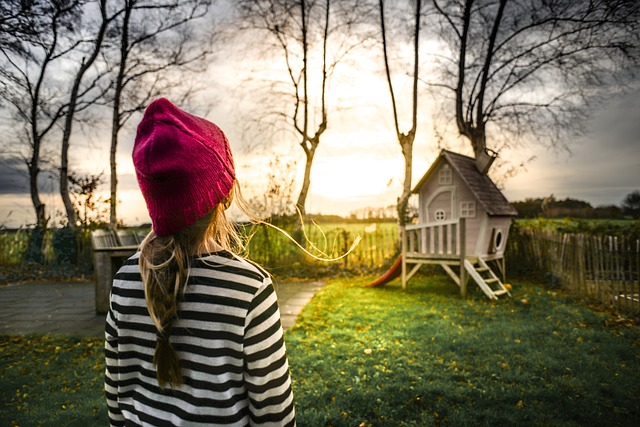Enhancing the kid-friendliness of your garden
#Collaborative post
There is no questioning the benefits of being outside, particularly for kids. Getting kids outside is essential since doing so provides them with fresh air, exercise, independence, education, and a playground. But it can be challenging, especially with contemporary technology luring people inside. Here are our suggestions for making a more appealing garden to encourage your little ones—or not-so-little ones—to spend more time outside.

Embracing fauna
Nature is unmatched. Few kids can resist the allure of a bustling garden, so it’s crucial to make it as wildlife-friendly as you can to encourage kids to play there. Try some of these:
- Similar to log piles, bug motels provide a haven for creepy crawlies. Seeing more bugs can boost your chances of seeing more birds, amphibians, and even hedgehogs because they are at the bottom of the food chain.
- Ponds may be simply built on a budget and open up a whole new world of fauna to discover. However, be cautious while adding water because even a small amount might be harmful to young children.
- The various bird species found in our country can be attracted to the garden by using bird boxes and feeders. There is a lot to learn about the more than 600 UK species!
Hideaway
Giving a child their area will help them develop their need for independence. If you’re hesitant to build a den or hideaway permanently, a tent or arrangement of blankets makes a terrific temporary space, but permanent spaces can be wonderful complements to a garden.
- Playhouses exist in a wide variety of shapes, sizes, and styles, and they are ideal for smaller kids. Due to their use of natural materials, wooden garden rooms are an amazing option for kids and blend into a garden area easily.
- If you have a suitable tree, tree houses are one possibility. These are often made by hand, which means they take a little more time and work to complete but can create the ideal play area for a developing child’s imagination.
- Living willow can be used to build willow living dens, an ever-evolving place that fits into the garden environment. Children will feel more connected to the space if you involve them in the construction process.
Keep in mind that dens offer a place to rest and find shade, which is essential during the summer. They also provide protection from the weather, allowing play to continue even after the sun has set.
A large lawn
A sizable lawn area is essential for active, playful children. Grass provides a cushioned landing for handstands, leaps, and other risky activities, making them entertaining. A larger lawn will reduce the chance that kids may wander off into your flowerbeds and destroy all of your gorgeous plants!
Speaking of planting, you might want to give your choice of plants a little thought. It is best to stay away from thorny and spiky plants that can hurt or scratch people, especially in public spaces. You should also think about poisonous plants. Young, curious kids have the propensity to put items in their mouths, which can be risky with some garden additions.
Here are some poisonous plants to avoid: foxglove, hydrangea, poinsettia, oleander, hemlock water, and mistletoe.
Climbing equipment and frames
For many children, gardens are all about climbing structures, swings, slides, and trampolines. You can’t go wrong with acquiring school playground equipment if you have the space and want the kids to embrace the outdoors. However, you don’t have to damage your garden to accomplish this.
- Children love trampolines, but they may be large and unattractive. That’s why many savvy parents have started to dig them down to ground level, which also decreases the chance of sliding off, making them much safer.
- Climbing frames and mud kitchens are two examples of wooden equipment that typically integrate well with the design of gardens and endure considerably longer than their less expensive plastic counterparts.
- There is no reason garden enthusiasts shouldn’t design their outdoor spaces for the entire family, even though designing a garden around your child’s play places and structures is uncommon. Including your kids in garden design ideas will motivate them to play outside.
The last piece of advice – connect your house to nature
Creating a home that better connects to your garden or outdoor space can again make it much easier for kids to get outside, as well as create a healthier space overall.
When small kids see the garden, they frequently want to go outside and play. Greater outdoor accessibility for older kids will make it much tougher for them to refuse.